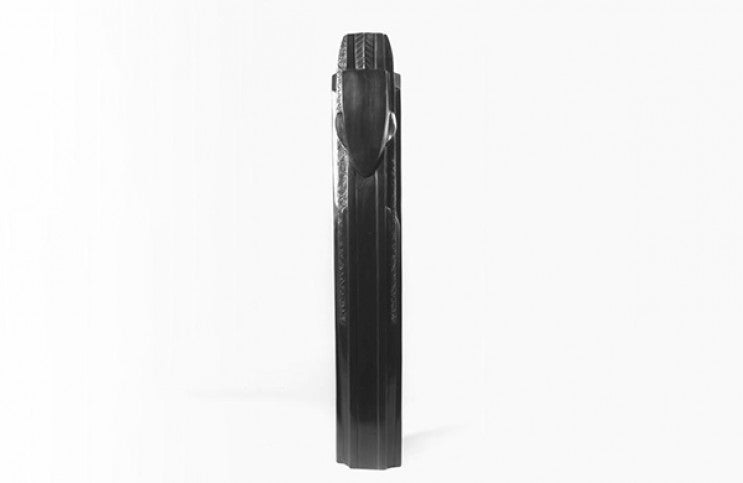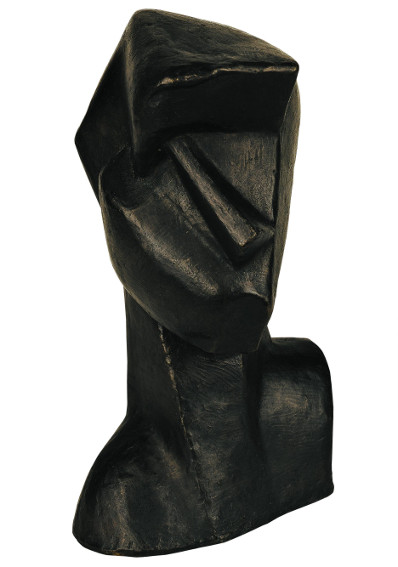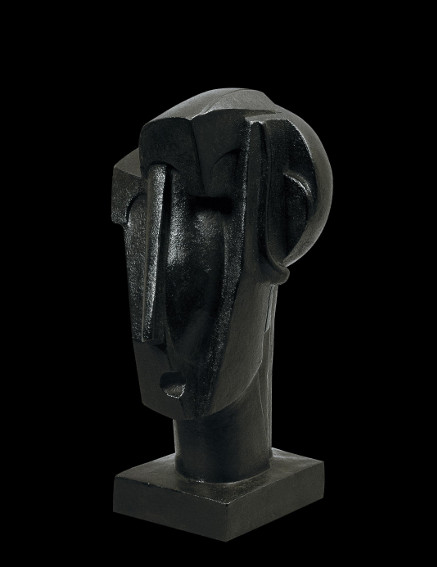
How Joseph Csaky Applied Pictorial Cubism in His Sculpture
Though Cubism was most widely translated through the mediums of painting and collage, several pioneering artists also extended the Cubist method into the realms of sculpture and relief. Joseph Csaky was one of the first sculptors to employ the Cubist method. In his hands, the method expanded significantly, beyond even what the authors of “Du Cubism” had in mind when they first outlined the scope of Cubist thought. What set Csaky apart from other early Cubist sculptors was that he was not merely taking Cubist ideas and applying them to three-dimensional space. Csaky was a humanist and a sculptor first, and a Cubist second. For him, Cubism was not a trend or merely a style, but an answer to personal questions about how to break free from the outdated ideas of the past. In other words, for some Cubist sculptors Cubism was the end of the journey – their final position. For Csaky, it was the beginning – a liberation that would lead him to other things. Csaky ultimately made a name for himself as one of the essential avant-garde pioneers in Pre-World War I Paris, participating in all of the most important early Cubist exhibitions, including the 1911 and 1912 Salon des Indépendants, the 1912 Salon d'Automne (where he exhibited alongside artists like Modigliani and František Kupka), and the famous Section d'Or. But after volunteering to fight in the war, Csaky returned to Paris a changed man. Cubism helped him comprehend and express his shattered view of existence, and the innovative works he made after the war helped lead Cubism into a series of rapid aesthetic evolutions. Unlike most of his contemporaries, however, Csaky did not stick with Cubism, nor even abstraction. By the end of the 1920s, he abandoned the method in favor of a return to figurative art. Yet even in his later work hints of his unique Cubist vocabulary remain visible, revealing a never-ending desire to see below the surface into the unknown aspects of the human experience.
The Beehive
Joseph Csaky was born in Szeged, Hungary, in 1888. He joined the Academy of Applied Arts at age 18 where he studied plaster molding and other traditional sculpture techniques. Dissatisfied with his traditional education, he left school and took a series of jobs at which he learned several modern industrial methods of creating three-dimensional objects, including ceramics, metal work, and even taxidermy. He knew by the age of 20 that he wanted to become a professional artist, but was frustrated by his cultural and geographic circumstances. In summer of 1908, Csaky decided he belonged in Paris and set out on foot, arriving in the fall with almost no money. Coincidentally, that same year, Alexander Archipenko left Ukraine and also traveled to Paris on foot. Both Csaky and Archipenko eventually ended up in the same place in the city – renting studios at the infamous artist colony known as La Ruche.

Joseph Csaky - Cubist Head, 1914. Bronze with black finish. 15 1/5 × 8 1/2 × 4 7/10 in. 38.5 × 21.5 × 12 cm. Kalman Maklary Fine Arts, Budapest
La Ruche, which translates into “The Beehive,” is a unique, round building in the Montparnasse district of Paris, originally built to house a wine bar during the 1900 Exposition Universelle. It was designed by Gustave Eiffel 11 years after his famous tower debuted at the Exposition Universelle 1989. By 1908, The Beehive had already been transformed into low-cost housing and work spaces for artists. In addition to Csaky and Archipenko, the other artists who lived or worked there around this time included Sonia Delaunay (the progenitor of Orphic Cubism), Guillaume Apollinaire (whose art writing helped build the public understanding of Cubism), and Fernand Léger (whose personal Cubist vocabulary of tubular and conical shapes was dubbed Tubism). While at The Beehive, Csaky was introduced to the work of Auguste Rodin, which convinced him of the possibilities of sculpting modern works in stone, as well as the work of Pablo Picasso. Picasso inspired Csaky to look to the examples of non-western art traditions, and helped him understand the value of volumes, planes, geometry and space as abstract elements free of narrative associations, and worthy of artistic consideration in their own right.
Cubist Human Relations
The first notably Cubist sculptures Csaky made were of human heads. Collapsed in some places and expanded in others, they convey quite literally the notion of multiple simultaneous viewpoints converging in one space at one time. While intriguing in their exploration of volume, such works broke little new ground. They basically translated existing two-dimensional experiments into three-dimensional space. It was after the war that Csaky had his breakthrough. He returned to Paris with visions of war machines and macabre realities about the human condition. His reaction was not to show these horrors in detail, but rather to gravitate towards a Purism, a Cubist tendency that involved reducing objects seen from various perspectives to their essential forms, removing all detail then layering the forms in an almost absurdist assemblage.

Joseph Csaky - Head with Lock of Hair, 1920. Bronze with brown finish. 13 × 5 1/10 × 4 3/10 in. 33 × 13 × 11 cm. Kalman Maklary Fine Arts, Budapest
The sculptures Csaky made after the war had none of the expressionistic drama of his early Cubist work. Their impersonal flatness reached its apex in the “Tower” series of the 1920s: tall, skinny, linear sculptures of humanistic forms that resemble both coffins and architecture. These works imply both the emptiness and vanity of the human form, while also elevating the figure to totemic status. Simultaneously primitive and modern, they hint at what universally connects cultures and eras. For Csaky, the Tower series marked the end of his time as a Cubist. Something inside him drew him back to more sentimental portrayals of humanity, and he spent the rest of his life making narrative sculptures such as “Maternité” (1953), part of his ongoing mother and child series, and public sculptures, such as “La Danseuse” (1959), which features a carefree young girl frozen in a whimsical dance. Yet despite their narrative qualities, even these works contain an unmistakable hint of modernity, as though their surface realities belie the unending and essentially Cubist quest Csaky was always on to reveal the mysteries of the unseen.
Featured image: Joseph Csaky - Abstract Figure, 1921. Bronze with black finish. 30 7/10 × 4 7/10 × 4 7/10 in. 78 × 12 × 12 cm. Kalman Maklary Fine Arts, Budapest
All images used for illustrative purposes only
By Phillip Barcio






